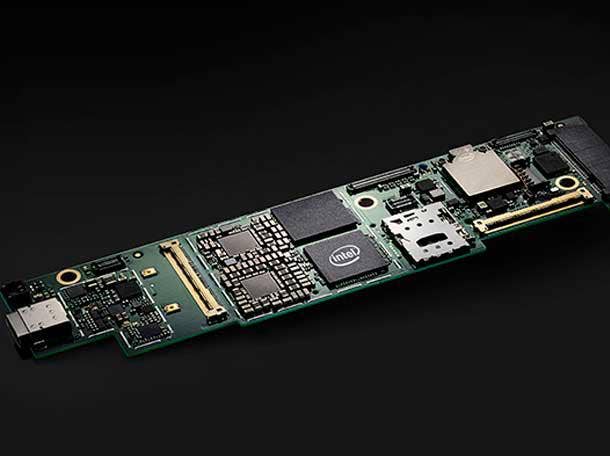Intel Launches Lakefield Hybrid CPUs For Foldable, Dual-Screen PCs
Thanks to Intel's Foveros 3D packaging technology, the Lakefield processors are dramatically smaller than other mobile CPUs, enabling OEMs to create new ultra-light and innovative PC form factors like the foldable Lenovo ThinkPad X1 Fold and dual-screen Microsoft Surface Neo.

Intel has launched new Intel Core processors for foldable and dual-screen PCs, among other types of innovative and ultra-light form factors, that are the first to use the chipmaker's Foveros 3D packaging technology and a hybrid CPU architecture.
The new 7-watt, dime-sized processors, announced Wednesday, are called Intel Core processors with Intel Hybrid Technology, and the Santa Clara, Calif.-based chipmaker is pitching them as game changing for the PC market. The processors were previously known under the code name Lakefield since they were revealed at CES 2019.
[Related: Intel's Steve Long: We're Seeing A 'Resurgence' For PCs]
The first devices to use the new Lakefield processors are the Lenovo ThinkPad X1 Fold, which is the first PC to feature a folding OLED display and is expected to start shipping this year, and the Samsung Galaxy Book S, which will become in select markets starting this month. Microsoft's dual-screen Surface Neo tablet will also use Lakefield processors, but the device has reportedly been delayed to 2021.
"Intel Core processors with Intel Hybrid Technology are the touchstone of Intel’s vision for advancing the PC industry by taking an experience-based approach to designing silicon with a unique combination of architectures and IPs," Chris Walker, Intel's head of mobile client platforms, said in a statement. "Combined with Intel’s deepened co-engineering with our partners, these processors unlock the potential for innovative device categories of the future."
Thanks to Intel's new Foveros 3D packaging technology that allows the company to stack different CPU components in three layers, the processors are dramatically smaller than other mobile processors the company has created before, measuring at roughly the size of a dime. Compared to the Intel Core i7-8500Y that powers devices like the HP Spectre Folio and Google Pixelbook Go, Lakefield processors have up to a 56 percent smaller package area, enabling a 47 percent smaller board size.
This means OEMs have much more flexibility in designing innovative and small form factors like Lenovo's ThinkPad X1 Gold and Microsoft's Surface Neo, according to Intel. In addition to the Foveros 3D packaging technology, other features enabling design flexibility include package-on-package memory that further reduces board size and dual internal display pipes for foldable and dual-screen PCs.
The new Lakefield processors consist of the Intel Core i5-L16G7 and Intel Core i3-L13G4, both of which come with one 10-nanometer Sunny Cove core for high-performance applications and four power-efficient, 14nm Tremont Cores for balancing power and performance optimization for background tasks. With hardware-guided operating system scheduling, this allows the OS scheduler to determine whether applications should run on the Sunny Cove or Tremont cores for optimized performance.
Intel said this can translate into as much as 24 percent better web browsing performance per system-on-chip power and up to 12 percent faster single-threaded integer performance when comparing the new Core i5-L16G7 to the Core i7-8500Y.
The company is also promising improved GPU-accelerated performance thanks to the processors' Gen11 integrated graphics. With the Core i5-L16G7, Intel said it provides two times faster throughput for artificial intelligence-enhanced workloads and up to 1.7 times better graphics performance in comparison to the Core i7-8500Y.
Beyond performance, Intel said the Lakefield processors can provide as low as 2.5MW of standby system-on-chip power, which translates into as much as a 91 percent reduction in power when comparing the Core i5-L16G7 and Core i7-8500Y.
The Intel Core i5-L16G7 comes with five cores, five threads, 64 graphics cores, a 4 MB cache, a 1.4 GHz base frequency, a 3 GHz max single-core turbo frequency and a 1.8 GHz max all-core turbo frequency. The Core i3-L13G4 comes with five cores, five threads, 48 graphics cores, a 4 MB cache, an 800 MHz base frequency, a 2.8 GHz max single-core turbo frequency and a 1.3 GHz max all-core turbo frequency. Both feature up to 500 MHz in graphics frequency and support for LPDDR4X-4267 RAM.